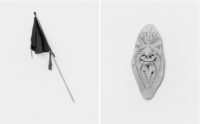
“When I think about nonlinear perception, I think about the way you collect various pieces of information and put them into some kind of functional use to make sense of the world. It is about consciousness itself.” – Bruce Conner
The multidisciplinary artist Bruce Conner (1933–2008) was truly an enigma. He moved effortlessly from sculptural assemblage to painting, conceptual art, collage, drawing, photography and experimental filmmaking without any sense of hierarchy. Deeply embedded in American countercultural movements of the postwar period from the Beat poets of the 1950s to the emergent punk scenes of the 1970s and 1980s, Conner had a radical and restless eye that brought with it a wry humor, biting wit and love of the uncanny and the revolutionary. Nowhere was Conner’s restless eye more apparent than in his now legendary body of experimental films that he undertook in 1958, which were composed of found, scavenged, and original footage. In fact, in many ways Conner can be seen as the pioneer of the remix and cutup techniques of filmmaking that are now so ubiquitous while he has also been called the “father of the music video” in recognition of his rapid-fire editing techniques used in every music video and film trailer made today. As he once said to an interviewer in 1986, “I learned to distrust words. I placed my bet on vision.”
Organized by independent curator Douglas Fogle, BRUCE CONNER / RECORDING ANGEL brings together seven of Conner’s most iconic films in the Marciano Art Foundation’s Theater Gallery projected in an alternating sequence on four different screens. On view will be a number of Conner’s pioneering works using the assemblage technique of cutting up and reediting found footage. A MOVIE (1958) brings together clips of Western serials, soft core “stag” films, and newsreels of car crashes, while his now legendary masterpiece CROSSROADS (1976) uses reedited declassified footage of the Operation Crossroads underwater atomic bomb tests at Bikini Atoll in 1946. In both works, Conner offers a meditation on the power of images in our consumer culture and the hubristic and violent nature of the human condition in general, and postwar American economic and military hegemony in particular. Music and the intimate connection of sound and image in film makes its presence felt in all of Conner’s films. A MOVIE features a soundtrack of Ottorino Respighi’s 1924 composition “Pines of Rome,” while the repeated nuclear explosions of CROSSROADS are accompanied by a haunting score by the minimalist composers Patrick Gleeson and Terry Riley.
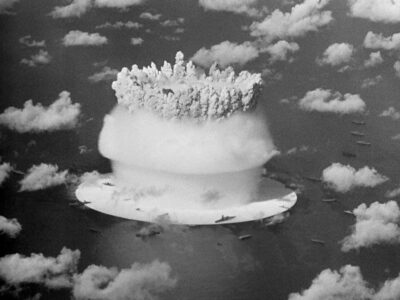
Other films by Conner are more specifically composed around music as we see in BREAKAWAY (1966), a radical cinematic deconstruction of the dancing body of visionary choreographer Toni Basil accompanied by the sound of her singing her pop song “Breakaway.” Elsewhere, Conner’s alternative travel film LOOKING FOR MUSHROOMS (1959-1967) takes us on a psychedelic cinematic journey through rural Mexico and urban America set to the tune of The Beatles’ song “Tomorrow Never Knows” from 1966 (a later alternative version of this work with a score by Terry Riley will also be on view). Two later works by Conner presage the world of music videos and return to his technique of reediting found industrial footage. MONGOLOID (1978) was composed as a cinematic accompaniment to the band Devo’s irreverent punk song, while AMERICA IS WAITING (1981) takes a similar approach to Brian Eno and David Byrne’s experimental sampled cut-up song from their album My Life in the Bush of Ghosts (1981). Both of these films re-used industrial and educational films to tell a very different story about the American Dream.
BRUCE CONNER / RECORDING ANGEL comes full circle with Conner’s late career film project, THREE SCREEN RAY (2006), a revisiting of his 1961 film COSMIC RAY, which combines an array of found footage meticulously edited synchronously across three screens while Ray Charles’ hit song “What’d I Say” (1959), a masterpiece of rhythm and blues, plays in the background. Re-editing his original footage in 2006, Conner created an explosive visual homage to the blind musician which some have likened to the visual equivalent of a cinematic slot machine in which images meet, diverge and meet again across its three screens. As with all of his cinematic work, Conner’s THREE SCREEN RAY delves into the optical unconscious of sex, power, and the consumer manias of the American Dream while asking us all to consider how the flow of images in our hyper-saturated mediascape can be interrupted and repurposed. While Conner’s restless investigation of these questions spanned decades, this presentation makes clear that his concerns with the existential threat of nuclear war, authoritarianism and consumer conformity are just as relevant today as they were when the works were made.
Bruce Conner (November 18, 1933 – July 7, 2008) was an American artist renowned for his work in film, assemblage, drawing, sculpture, painting, collage, photography, and conceptual pranks. Born in McPherson, Kansas and raised in Wichita, he attended Wichita State and got his BFA from Nebraska University in 1956, where he met and married Jean Sandstedt in 1957 before transplanting to San Francisco. Emerging from the California art scene, Conner’s work touches on various themes of postwar American society, from a rising consumer culture to the dread of nuclear apocalypse. His works have been included in major exhibitions, such as the historic 1961 “The Art of Assemblage” at the Museum of Modern Art. Career retrospectives have been presented at Walker Art Center in Minneapolis (2000)—which traveled to the Modern Art Museum of Fort Worth, the M.H. de Young Memorial Museum in San Francisco, and the Los Angeles Museum of Contemporary Art—and at the Museum of Modern Art, New York (2016), which traveled to San Francisco Museum of Modern Art in California and Museo Reina Sofia in Madrid. His works are represented in many public collections, including the Metropolitan Museum of Art; the Whitney Museum of American Art; the National Gallery of Art, Washington, D.C.; and the Centre Pompidou, Paris.
Tickets will be available January 21, 2026.
Image credit: Bruce Conner, CROSSROADS, 1976. 35mm, black/white, sound, 37 min. Digitally Restored, 2013. Courtesy of The Conner Family Trust and Michael Kohn Gallery, Los Angeles. Copyright Conner Family Trust
-
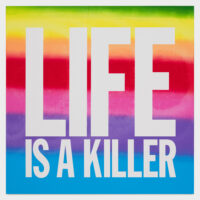 John Giorno: No NostalgiaOctober 25, 2025 – April 25, 2026
John Giorno: No NostalgiaOctober 25, 2025 – April 25, 2026 -
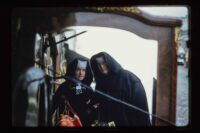 Corita Kent: The Sorcery of ImagesSeptember 26, 2025 – January 24, 2026
Corita Kent: The Sorcery of ImagesSeptember 26, 2025 – January 24, 2026 -
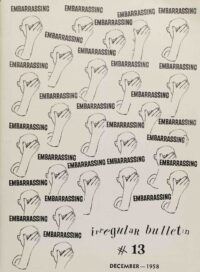 Irregularity: Corita and Immaculate Heart College’s Rule Breaking DesignsSeptember 26, 2025 – January 24, 2026
Irregularity: Corita and Immaculate Heart College’s Rule Breaking DesignsSeptember 26, 2025 – January 24, 2026 -
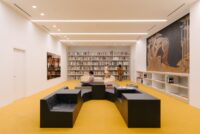 Kristen Wentrcek and Andrew Zebulon: QuaternionOngoing
Kristen Wentrcek and Andrew Zebulon: QuaternionOngoing -
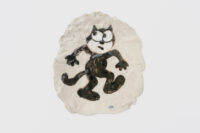 Transmissions: Selections from the Marciano CollectionOngoing
Transmissions: Selections from the Marciano CollectionOngoing -
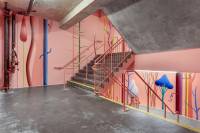 Nicolas Party: TreesPermanently On View
Nicolas Party: TreesPermanently On View -
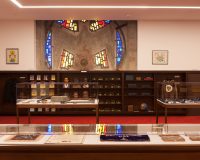 Masonic Objects: The Relic RoomPermanently On View
Masonic Objects: The Relic RoomPermanently On View


